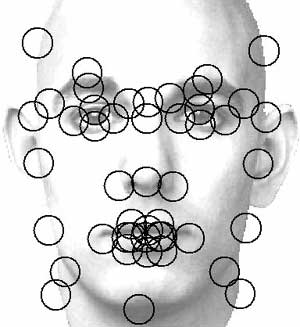Recently I was fortunate enough to be a beta tester for the new Android version of Lexi-Comp’s suite of medical information software. I was very excited for the opportunity as I’ve been using what I would consider inferior drug information resources since purchasing my Droid about a month ago. The installation was a problem initially as the databases wouldn’t install directly to the microSD card on the Droid. As you can imagine, the databases are large and immediately filled up the physical memory on the device. Within a couple of weeks of reporting the problem to Lexi-Comp they had corrected the issue and sent me a new build that installed seamlessly.
Month: December 2009
Physician dictation on mobile smartphones
RTT News: “3M Health Information Systems has released 3M(TM) Mobile Dictation Software, a powerful new application that extends 3M’s dictation, transcription, and speech recognition solutions. Available on the BlackBerry(R) or Windows Mobile(R) platforms, the software offers physicians the freedom of using a single device for phone, email, and dictation, and provides “anytime, anywhere” access via … Read more
Technology to prevent medication errors (article)
Forni A, Chu HT. Technology Utilization to Prevent Medication Errors. Curr Drug Saf. 2009 Oct 7 [ePub] This is a nice review article explores current technologies available to healthcare and what role they play in the reduction of medication errors. The article provides a short review of literature to support each technology reviewed. Technologies covered … Read more
Biometric identification and facial recognition
 CrunchGear reports on a new product called Lockface USB flash drive from Futen, a Japanese company. The flash drive uses facial recognition to identify its users. According to CrunchGear: “The first thing to do is to register a number of pictures of your face. After that, the Lockface verifies your face every time you need to access data on it (the verification process takes about a second). The USB drive doesn’t require extra software to be downloaded or installed. Alternatively, you can also use a password, completely ignoring the face recognition function of the device. It uses 256-bit AES to encrypt the data. Futen says the device has an error rate of about 2% (it verifies the “wrong†person in 1.91% of cases and won’t verify the right person in 1.98% of cases).â€
CrunchGear reports on a new product called Lockface USB flash drive from Futen, a Japanese company. The flash drive uses facial recognition to identify its users. According to CrunchGear: “The first thing to do is to register a number of pictures of your face. After that, the Lockface verifies your face every time you need to access data on it (the verification process takes about a second). The USB drive doesn’t require extra software to be downloaded or installed. Alternatively, you can also use a password, completely ignoring the face recognition function of the device. It uses 256-bit AES to encrypt the data. Futen says the device has an error rate of about 2% (it verifies the “wrong†person in 1.91% of cases and won’t verify the right person in 1.98% of cases).â€
Nice look at Web 2.0 and pharmacy in the American Journal of Pharmaceutical Education
Am J Pharm Educ. 2009;73(7):1-11: “One positive aspect of Web 2.0 applications is that they create a participatory architecture for supporting communities of learners. Unlike learning management systems (which are closed systems) and static Web pages (which are singular-owned), blogs, wikis, and social bookmarking sites are open to learners from multiple schools and facilitate collaboration … Read more
“What’d I miss?” – Week of December 13th
As usual there were a lot of things that happened during the week, and not all of it was pharmacy or technology related. Here’s a quick look at some of the stuff I found interesting.
Solution to illegible handwriting puzzle
Thanks for all the people who ventured a guess. Only the medications are transcribed and the original image is posted below the answers as a reference.
Cool Technology for Pharmacy
Installing and using Citrix Receiver on your iPhone/iPod Touch
While at ASHP Midyear a colleague and friend of mine, @pillguy, was able to pull up the pharmacy system at his hospital using Citrix on his iPhone. At that moment I was attacked by a green monster and nearly consumed with envy. I can not yet match this feat of superiority with my Droid, but I’m hopeful.
Clinical Surveillance
There is a nice article in the November 2009 issue of Hospital Pharmacy on the use of clinical surveillance in pharmacy. I’ve mentioned these types of systems before here and here. From the article: Clinical surveillance tools are atype of clinical decision support system (CDSS), providing pharmacists with patient information that has been filtered according … Read more
For the puzzle lovers in the group
Below is an example of some pretty bad handwriting. Take a look at it and see if you can decipher what the physician wants. I am looking for only medication related orders. Leave your guesses in the comment section. Good luck. The solution can be found here.